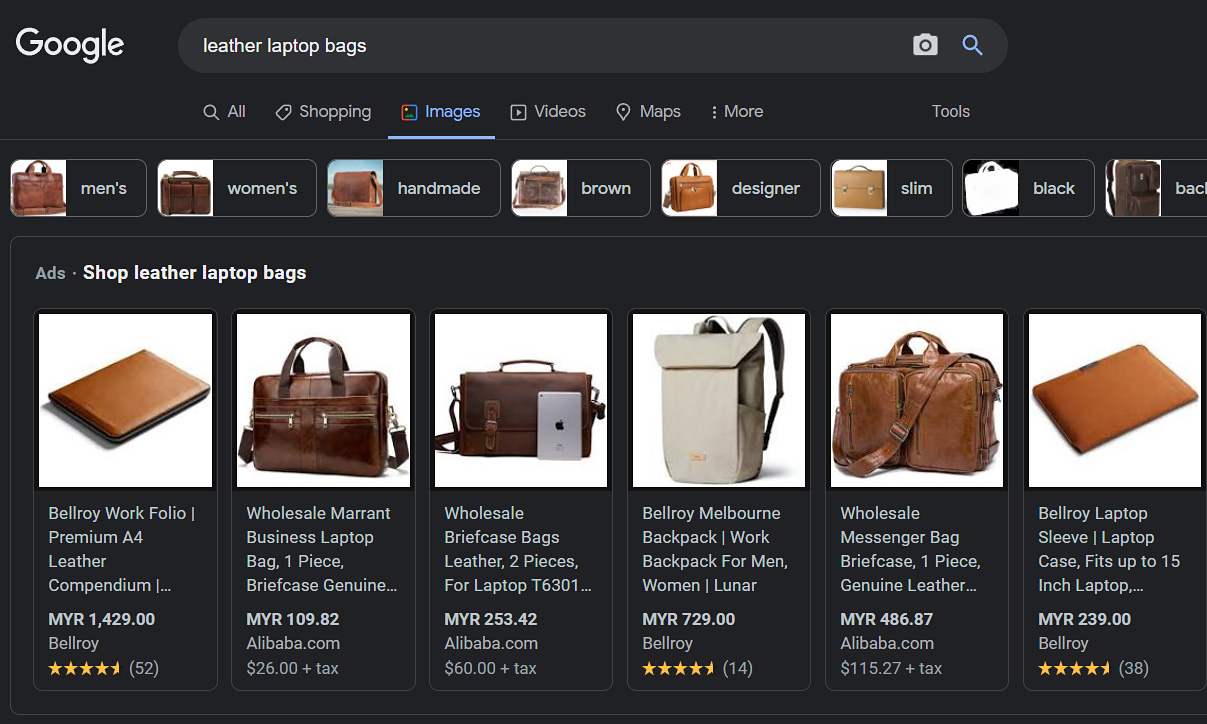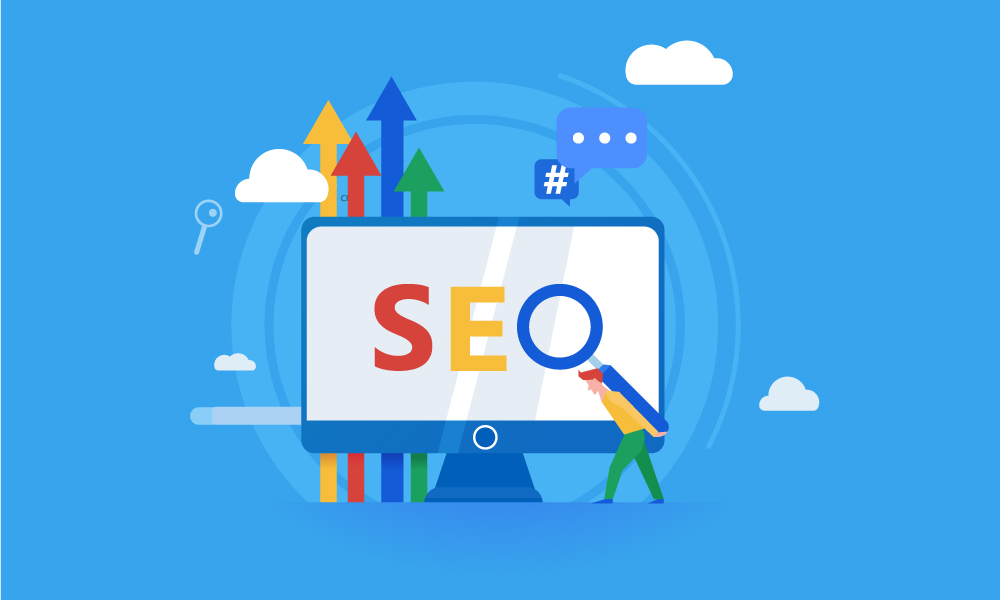Your 100% Comprehensive Guide To E-commerce Marketing

Imagine having a well-stocked shop and you’re standing behind the register and watching customers walk right on by. They either don’t know your business is there, or they don’t know what you’re selling. You then put up banners and signboards, and you start placing items in your window to attract customers’ attention as they walk by.
Yes, that’s the basics of marketing in the olden days of brick-and-mortar shops. You will find that e-commerce marketing isn’t all that much different. Instead of placing banners on your shop window, you place them on your website. Instead of placing signboards, you have a landing page.
With practically every marketing operation now taking place online, distinguishing between the many types of digital marketing used today can be difficult.
Consider ecommerce marketing: what is it and how does it differ from tactics such as social media, content, search engine, and email marketing?
Ecommerce and digital marketing do not have to be mutually exclusive. All of the above digital channels can be used by ecommerce websites to market a product and build their business.
In our article today, we will be going through marketing for e-commerce. Let’s start with the basis that e-commerce marketing is the act of driving traffic, building awareness, and action toward your business to sell your product or service online.
Ecommerce Advertising
Similar to how advertising sits under the umbrella of marketing, ecommerce advertising falls under ecommerce marketing, and when utilised in tandem, you can more effectively reach your audience members to drive conversions and improve brand awareness.
What is the difference between ecommerce marketing and ecommerce advertising? As stated in our definition above, ecommerce marketing is all about raising awareness and encouraging people to buy your goods or services.
Meanwhile, ecommerce advertising encompasses the strategies used to promote your product. These ads may take the shape of display ads, banner ads, or rich media ads in terms of online or ecommerce marketing and selling.
The major message here is that ecommerce advertising is a highly effective tool to focus your product or service promotion while establishing your ecommerce marketing plan.
Ecommerce Marketing Types
Here are some common marketing channels and how you'd use them to establish an online store to give you an idea of what an ecommerce marketing plan looks like.
✧ Social Media

Brands, publishers, contractors, and developing enterprises all create pages on today's most prominent social networks to engage with their target audience and provide material that they are interested in.
You can do the same thing as an ecommerce marketer, but your campaigns will look different, and not every social network is a suitable fit for your purposes.
Because ecommerce websites are extremely visual — after all, you have to show off the goods — your success on social media is dependent on how you use photography to draw attention and traffic to your product pages.
Here are some things you can keep in mind when planning out your next social media campaign.
Now rebranded itself to Meta and sees active usage of about 33 minutes per day on average. The largest age group still using this platform is 25-34 years of age which makes up 31.5% of its consumer database, comprising 43% females and 57% males, and monthly active users of around 2.91 billion people.
Currently, under the Meta group, this app sees a monthly active user number of around 2 billion people. The largest age group active within the platform are 25-34-year-olds making up to 31.2% of its user base, followed by 18-24-year-olds making up 31% of the user base. We can further break it down into gender with 48.4% being females while 51.8% are males. The average time spent on Instagram daily is 29 minutes.
TikTok
While this popular platform is still one of the youngest ones on our list, it sees an average of a whopping 1 billion active users per month. Being highly visual and engaging with its content, it’s no wonder then that the largest age group populating this app are 10-19-year-olds at 25% of its user base. It is interesting to note that there are more females(61%) than there are males(39%) on this platform. Since it’s so engaging, it’s also no surprise that the average time spent per day on this app is around 89 minutes.
This one has been around for quite some time now but does not see the same number of users as the rest on this list with only 211 million daily active users with the largest age group being 18-29 years old taking up to 42% of its user base, and comprising of 38.4% females and 61.6% males. The average time spent daily on the platform is 31 minutes. What’s fun to note about this platform is that roughly one-third of its user base is college-educated. This lends itself to Twitter’s status as being associated with a place to discuss events, breaking news, and drive discussions.
The platform for professionals. The largest age group of users here are 25-34-year-olds (58.4%) and quite evenly balanced between genders at 48% being females and 52% being males. One nifty bit of info that LinkedIn has furnished us is that they know across the network, 63% of their users access the platform weekly while 22% of them do so daily. It is to be noted that since this is a platform for professionals, consumer marketing may not be the best bet here. Even LinkedIn themself have stated that it’s the top-rated social network for lead generation and a great source for B2B marketers looking to find targeted and motivating audiences for their campaigns.
YouTube
Much like Facebook, this platform enjoys over 2 billion active monthly users and the largest age group going from 15-35 years of age and 62% of its users log in to the platform daily. The average time spent per session is roughly 30 minutes. What you want to keep in mind here is that people go on this platform to be entertained, much like in TikTok. Therefore, try your best to balance your content between entertainment and advertising.

Finally, you can also take your social media posts to the next level by producing shoppable content, which allows viewers to buy straight away. This can range from strategically placed display adverts within a social feed to additional tags that link viewers to a buying cart. These techniques assist you in removing friction from the purchasing process. Some of these can be done using platform-specific features such as Facebook Business Manager.
Keep in mind also that product reviews are very common in online businesses. Using a Facebook Page to promote product praise is ideal for firms that already solicit customer feedback on their website.
✧ Content Marketing
When you hear the term "content marketing," you might think of blogging and video marketing — information that is intended to increase the ranking of your website in search engines and answer queries about your business. But, if you're selling a product online, do articles and videos truly help you make sales? You certainly do.
Here are some ideas for using content to promote your ecommerce store.
Optimised product page copies
Optimise your product pages for concise, product-related keywords that include the product's name. If you sell wedding dresses, for example, a Google search for "leather laptop bags" is more likely to result in product pages similar to yours if you've included that term on the page.

Also, make sure that your page titles, headers, and picture alt text include relevant keywords so that search engines may return your ecommerce store for the appropriate query.
Relevant blog articles
If you run an online marketing business, creating blog entries about "how to do e-commerce marketing" might appeal to anyone who wants to start their own online business and wants to know how to do their marketing.
As visitors get more involved, you can develop posts that will bring them into consideration, such as "how to choose the right social media platform for marketing" and convert them into leads, you could also consider a downloadable “e-commerce marketing checklist” spreadsheet.
Make guest posts on external websites
Guest posting can put you and your items in front of the right people and usually for free. Submitting guest posts will also help you increase domain authority for your ecommerce site and indicate to search engines that you have a trustworthy site.
You must look for websites that rank for keywords connected to your product. You may not even need to write a complete post at times. If a relevant post already exists on a site, offer to expand on it by offering extra context, such as a video or infographic with a link to your site.
Upload product videos on YouTube, Instagram, TikTok, etc

YouTube has over one billion active viewers. Chances are, your target audience is among them. It is also the second-largest search engine, trailing only to Google, but it’s not surprising since they’re both connected. If you're looking for a large, captive audience, YouTube is the place to be. Determine your themes using highly searched keyword terms, then distribute videos that are relevant to your product and useful to your audience.
This is also a good option for lesson videos that show current customers how to use your product. These videos can show people how to use your product in the best way possible, enhancing customer happiness and developing long-term relationships with website visitors.
Have a keyword-driven FAQ section on your site

If your audience has questions about your product, you should be the one to answer them. To attract viewers to your website, create a FAQ page with answers to high volume, long-tail keyword queries. You'll be gaining authority and traffic, both of which are critical components of a successful ecommerce company.
✧ SEO Marketing

SEM (search engine marketing) encompasses both SEO (search engine optimization) and sponsored advertising. While SEO relies on your understanding of Google's ranking algorithm to improve the content, SEM can include pay-per-click (PPC) ads, display advertising, or product-specific ad campaigns (think Google Shopping), all of which allow you to pay for top spots on search engine results pages.
PPC campaigns on Google ensure that when potential buyers enter search phrases that match the terms of your campaign, they will see a connection to your page. However, because you are paying Google each time someone clicks on your result, the payout to you should be substantial.
This is why ecommerce marketers frequently sign up for Google AdWords and use PPC ads to promote their product pages. When a searcher clicks on a paid result, the campaign places the searcher directly in front of the company's product, boosting the possibility that the searcher will purchase before leaving the company's website.
Backlinking (also known as "inbound links," "incoming links," or "one-way links") are links from one website to another. Backlinks are regarded as "votes" for a given website by Google and other major search engines. Pages having a high number of backlinks typically rank high in organic search engine results. An example of this could include something we talked about earlier like guest posting on an external website.
✧ E-mail Marketing

Email marketing is one of the oldest kinds of digital marketing, and believe it or not, it has particular importance in the realm of ecommerce marketing.
What's the best thing about email marketing? It is possible to automate it. Automation means that you can put up a successful drip campaign to subscribers segmented by interest or stage in the buyer's journey and then sit back and let your email campaign work its magic. It's one less marketing approach to add to your vast list of responsibilities.
Nonetheless, you must be rigorous about your email list to preserve confidence among your leads. In an era where data privacy is a top priority for internet users, not every commercial email is welcome in their inbox. Ecommerce marketers need to be careful when and how they add website visitors to their mailing list.
Here are two examples of how an ecommerce marketer may employ email marketing:
1. After-sales follow up
Sending a follow-up email after a user has purchased a product from your website and agreed to receive emails during the checkout process keeps the dialogue going and measures their future interest in your product range.
A post-purchase follow-up also demonstrates that you care about them beyond the sale and that your firm is invested in their success with your product. It allows you to gather feedback on their purchasing experience, which helps you eliminate friction for future customers.
Some best practices for this type of email include asking them to write a product review and/or reading original content on how to use your product.
2. Shopping cart abandonment

Users abandon their shopping carts for a variety of reasons, and emails to diagnose the issue and keep their business might mean the difference between a sale and a customer lost. We'll go through some strategies for reducing shopping cart abandonment further down.
If a website visitor fails to finish a transaction while in your shopping cart, consider sending an email to remind them to complete the checkout process, assist, or recommend other similar products to refocus their thoughts on you and return their browser to your ecommerce store.
Some strategies for reducing shopping cart abandonment include:
• Money-back assurances
• A straightforward return policy
• Better delivery possibilities
• Customer service is available right away
✧ Influencer Marketing

Influencer marketing focuses on people or businesses that affect your target market. It is usually used to signify Instagram accounts with several thousand followers.
Influencers cultivate networks of people who know, like, and trust. As a result, it is simple for them to generate interest in your online product through a recommendation or sponsored post.
If you want to read more about influencer marketing, we've written a rather comprehensive guide about the subject which can be found here.
✧ Affiliate Marketing

Affiliate marketing is used by 81% of brands, and ecommerce sites are ideal candidates. Affiliates are individuals or businesses who assist you in selling your goods online in exchange for a commission.
Unlike most social media influencers, affiliates drive product interest using traditional, but effective, marketing methods. They frequently employ paid advertising, content marketing, and other methods to attract attention to their product sites - it's like having a marketing team working for you.
✧ Local Marketing

Local marketing is an often-overlooked approach for ecommerce businesses, but it allows you to double focus on the locations where most of your prospects reside if you have a huge population of them in one area and offers incentives to your potential client base.
Here's how it works: Tracking cookies might help you figure out where your prospects are. Then, in places where you have warehouses or shipping facilities, offer discounted or even free delivery to potential clients. The offer could be exactly what you need to attract a new customer.
Tips For Ecommerce Marketing
Beyond the traditional methods discussed above, there are numerous ecommerce marketing tactics you can use to drive visitors to your online store. Let's look at some additional innovative strategies to market your ecommerce firm.
Use Personalisation
Companies that embrace personalisation report revenue increases ranging from 6~10%. What exactly is this "magic bullet"?
Personalisation is discovering ways to cater to individuals within your existing marketing materials; it is adapting your outputs to match the specific wants of your consumer.
This can take the form of including a prospect's name in the subject line of an email, recommending information or products based on a visitor's behaviour, or even displaying smart content on a webpage when a user returns or has progressed along their buyer's journey.
Personalisation may help consumers move along their buyer's journey quicker by putting what they need right in front of them, making it easy for them to do what you want them to do - make a purchase.
User-Generated Content
What if your customers could market for you for free? That is exactly what user-generated content, also known as UGC, is. It's all about figuring out how to get your customers to advertise and share your company.
This helps in two ways:
✤ It increases traffic to your ecommerce business
✤ It creates a genuine following of individuals who are interested in what you have to offer.
Coca-Cola did an excellent job at this with their "Share a Coke" campaign, which involved making customised Coke bottles with people's names, which were organically shared throughout social media platforms.
Here are some excellent methods for encouraging UGC:
Competition: Customers can participate in competitions to win by presenting your product in some way.
Reviews: Review sites are places where customers may submit their thoughts on your goods
Social Media: Hashtags on social media, where users submit content with a branded hashtag
Loyalty Programs
A loyal customer is a long-term customer, and who doesn't want to do business with them again and again? Through appropriate incentives and discounts, a loyalty programme incentivises a consumer to continue doing business with you. While developing a customer loyalty programme requires time and effort, the results are worth it in terms of recurring business, UGC, referrals, and retention.
When developing a loyalty programme for your ecommerce firm, there are a few things to keep in mind. Consider broadening the methods in which customers may demonstrate their devotion, whether through repeat purchases, social media mentions, or sharing your content. Consider how you will reward their loyalty, whether through points, discount vouchers, or special incentives.
Word of mouth buzz marketing
Word-of-mouth marketing is one of the most effective marketing methods available. It is founded on the assumption that people prefer guidance from people who are similar to them. As shoppers become more dubious of organisations' marketing practices, the importance of word-of-mouth marketing in your business becomes more evident.
While you may promote and even create forms of word-of-mouth marketing that are equally as effective by providing a fantastic customer experience, you can also encourage and even create your forms that are equally as successful.
Customer reviews & testimonials
Remember how we said that prospects' faith in companies is dwindling? Customer reviews, on the other hand, assist to offset that suspicion since they come from people who aren't engaged in your company's success - instead, they're a true and, at times, brutally honest appraisal of your product and how it worked out for them.
Similarly, customer testimonials can help you spread the word about how fantastic your product is. Testimonials are essentially targeted reviews because they are often produced from interviews in which particular questions can be asked to get to the areas you want to address and communicate with prospects.
Because they feature references of your product or talk about the benefits gained from using your product, they act as marketing tools for you, and they frequently do the selling for you with the reason that "If it worked for them, it might work for me".
Encourage your customers to give evaluations in any way you can. That post-purchase email we mentioned earlier could be a fantastic place to start.
Referrals
A referral occurs when a customer asks their friends, family members, and coworkers to buy from you. Sure, this may happen spontaneously if customers genuinely like your product, but you can make it happen more frequently by implementing a referral programme.
Simply ask your consumers to recommend others in exchange for something valuable - discounts, freebies, or cash prizes that you may offer to either your new or existing customers or both.
Evernote did this with their referral program by providing points to referrers that they could trade-in for an additional monthly upload quota, and referees get a free month trial of the premium version of the app.
Case Studies
Case studies enable you to highlight your clients' triumphs in a way that pushes prospects over the edge. They are intended to relate to your buyer profile and therefore interview consumers who most closely resemble your target population. The finest case study practice is to highlight a customer's life before your product and how it has significantly improved after then.
Never Underestimate Live Chat

Chatbots – you’ve heard about them, right? They are one of two methods for implementing a live chat approach. Depending on the size of your business, you may be able to have a live person present to interact with potential consumers who visit your store.
Whether you use a bot or a human, live chat will be especially useful while consumers are browsing your store so they can obtain answers right away and when they're in the checkout process to neutralise any objections shortly before buying.
Think Of Using Responsive Website Designs

Whatever component of your ecommerce strategy you're working on, a responsive design should be included. Your ecommerce marketing strategies will be visible and easy to use on any device whether it’s on a laptop, a smartphone, iPad, or tablet.
In a world where consumers are constantly on the move, accessing websites and viewing ecommerce marketing materials from several devices from a variety of locations, your content will be easy to read and simple to navigate for all users.
Strategies For Ecommerce Marketing
Now that you understand the fundamentals of ecommerce marketing, let's bring it all together and go over some pointers for developing a successful ecommerce marketing strategy for your online business.
Set your goals based on industry benchmarks
There are certain industry benchmarks that you can use to compare your goals against, depending on your industry, region, business size, and a variety of other criteria.
Consider goals such as website visits, click-through rates, conversion rates, and customer acquisition costs, and compare them to comparable ecommerce businesses in your industry.
Break your strategy down further
There are various pathways you could take when developing a marketing strategy for your online store, several of which we have described above. It may be tempting to pursue all of them, but doing so ensures that you will be ineffective at all of them.
We recommend that you begin by focusing on a couple of techniques that you believe will have the highest ROI — and are the most accessible to you — and developing action items for each.
For example, suppose you opted to focus on a paid plan to drive users to your store. Set up a Google Ads account, determine your ad expenditure, build an ad group based on your desired keywords, and monitor your account daily.
This may appear simple, as it should be. You don't want to be caught up in the pursuit of the next amazing ecommerce marketing strategy without thoroughly executing one and allowing it to work for you.
Satisfy both new & long time customers
Marketing does not end when a sale is made. Once a customer becomes a client, you should continue to engage, nurture, and delight them.
With this approach, you'll help your clients' long-term success, which will increase loyalty. It will also encourage your consumers to share their positive experiences with your leads and target audience members via case studies, reviews, testimonials, and word-of-mouth.

Closing Words
Now that you have a greater understanding of e-commerce marketing, you can put it to use. If you currently have an e-commerce website, develop an ecommerce marketing strategy to boost sales. Set up your e-commerce business on an e-commerce platform that already incorporates the fundamental components of e-commerce marketing if you're just getting started.
More articles please read The Comprehensive Guide To Advertising On Instagram

